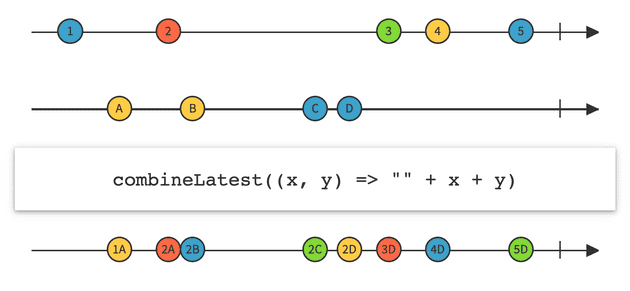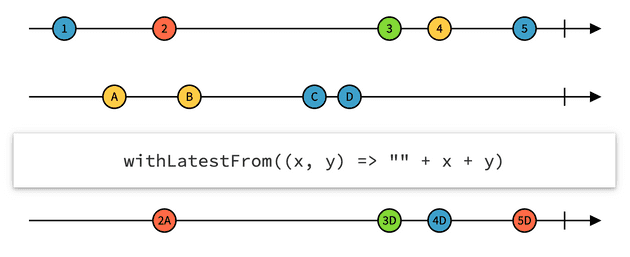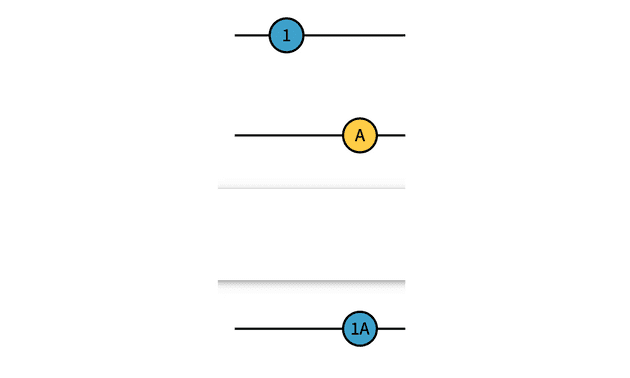The combineLatest and withLatestFrom operators in Rx have very similar names. What’s the difference between them?
combineLatest
combineLatest simply combines multiple sources and emits any time there’s a new value from any of them.
Here is an example use case:
// All examples below are in Kotlin
disposables += Observable.combineLatest(
view.onNameChanged(), view.onEmailChanged(), ::AccountInfo)
.subscribe { accountInfo ->
view.setNextStepButtonEnabled(accountInfo.isValid())
}Here is the marble diagram for combineLatest:
As we can see, any time there’s a new event from any of the sources we get the latest values from all sources. It’s up to us to define how the values should be combined. For example we could wrap the values in a Pair, or a custom object like the AccountInfo above.
withLatestFrom
Let’s say we want to build a simple screen where a person can enter their name and we want to validate the name. We can use withLatestFrom to achieve this:
disposables += view.onNameFocusChanged() // When focus changes
.withLatestFrom(view.onNameChanged()) // Grab the name
.subscribe { (focus, name) ->
val hasLostFocus = !focus
if (hasLostFocus && !isValidName(name)) {
view.showInvalidName()
} else {
view.clearNameError()
}
}Here is the marble diagram for withLatestFrom:
What this means:
- The top line are focus change events, the bottom line are name change events.
- We only emit when focus changes.
- When the user never entered the name, just focused and then left the input, we don’t emit an event.
- When the user left the input and later the name (somehow) changed, we don’t emit an event.
The properties above are exactly what we want for our use case (you might need slightly different UX in your use case).
Appendix: What about the zip operator?
Like the other operators above, the zip operator combines the values from multiple streams. The difference is that it waits until there is a new value from each stream. See “2” in the example below — nothing is emitted yet:
As we can see from the diagram, zip can be equivalent to combineLatest in simple cases, for example when we have just two HTTP requests:
If you know each Observable will emit at most one value, you should use the Single interface rather than Observable to make the contract explicit.



